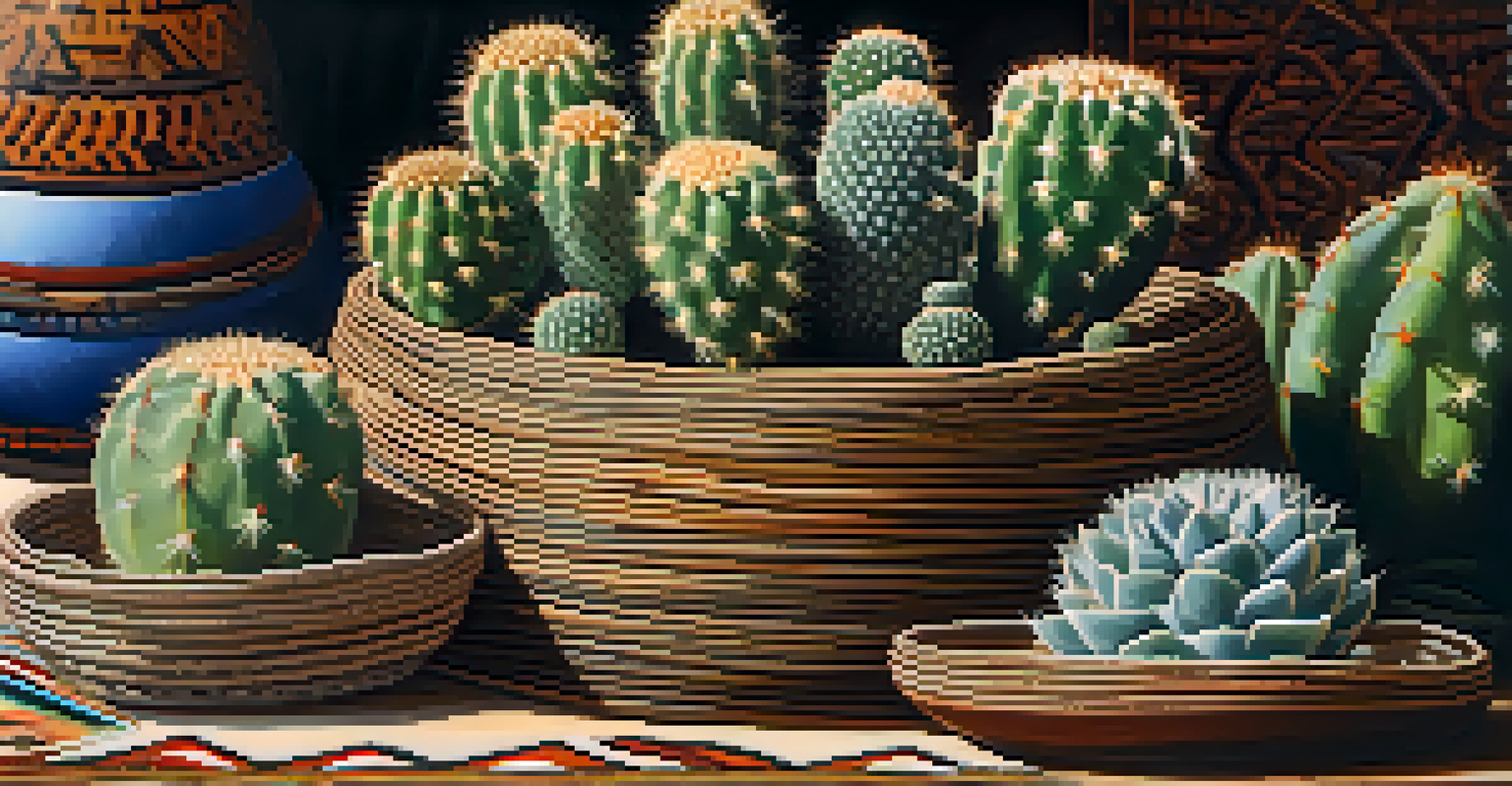Cultural Perspectives on Entheogen Use in Healing Practices

Understanding Entheogens: A Cultural Overview
Entheogens are substances that induce altered states of consciousness, often used in spiritual or healing contexts. Various cultures around the world have incorporated these natural compounds into their traditional practices, viewing them as sacred tools for connection and healing. From the Amazonian shamans using ayahuasca to the Native American use of peyote, these substances carry deep cultural significance and historical roots.
The use of entheogens is a deeply spiritual experience, often leading to profound insights and a greater appreciation for life.
The term 'entheogen' itself comes from Greek, meaning 'generating the divine within.' This highlights their role not just as drugs, but as facilitators of profound spiritual experiences. Many indigenous cultures believe that these experiences can lead to healing, both physically and emotionally, by providing insights that are otherwise inaccessible.
As we explore the cultural perspectives on entheogen use, it's essential to recognize the importance of context. In many societies, these practices are accompanied by rituals and guidance from experienced practitioners, ensuring that the experience is safe and meaningful.
Entheogens in Indigenous Healing Traditions
Indigenous cultures have been using entheogens for centuries, often integrating them into their healing rituals. For instance, the Shipibo-Conibo people of Peru utilize ayahuasca in ceremonies to address mental and physical ailments. These ceremonies are led by shamans who guide participants, ensuring that the experience is both transformative and healing.

The use of entheogens is deeply intertwined with cultural identity and spirituality. For many indigenous groups, these substances are not just healing tools but are considered sacred allies in their relationship with nature and the cosmos. They help individuals reconnect with their roots and gain wisdom from their ancestors.
Cultural Significance of Entheogens
Entheogens hold deep cultural importance, serving as sacred tools for healing and connection in various indigenous practices.
However, the increasing interest in these substances from Western cultures poses challenges. It's vital to approach these practices with respect and understanding, acknowledging the historical significance and the potential for cultural appropriation.
Modern Perspectives on Entheogens in Therapy
In recent years, the therapeutic potential of entheogens has garnered attention in Western medicine. Researchers are exploring how substances like psilocybin and MDMA can treat mental health conditions such as PTSD and depression. This resurgence is not just about finding new treatments; it also involves a reevaluation of how we understand consciousness and healing.
When we engage with entheogens, we are not just altering our consciousness; we are accessing a deeper understanding of ourselves and the universe.
Many therapists advocate for a holistic approach, integrating traditional knowledge with modern science. This synergy can enhance the healing process, allowing patients to explore their psyche in a safe and supportive environment. By bridging these perspectives, we can create more effective therapeutic practices.
However, the modern use of entheogens often lacks the cultural context that is essential for their proper application. It's crucial to ensure that these practices do not strip away the rich traditions and meanings that have been cultivated over generations.
The Role of Ritual in Entheogenic Healing
Ritual plays a significant role in the healing process involving entheogens. In many cultures, the preparation and consumption of these substances are surrounded by specific rituals designed to create a safe and sacred space. These rituals can involve chanting, drumming, or other communal activities that foster connection among participants.
The significance of ritual lies in its ability to enhance the experience and provide a framework for understanding the insights gained during the journey. Through rituals, individuals can find meaning in their experiences, leading to a deeper sense of healing and personal growth.
Therapeutic Potential in Modern Medicine
Research into entheogens like psilocybin and MDMA is revealing their potential to treat mental health conditions, fostering a reevaluation of healing approaches.
As Western therapists begin to incorporate entheogens into their practices, understanding the importance of ritual can be invaluable. Integrating elements of ceremony can help create a more profound and respectful experience for those seeking healing.
Entheogens and Spirituality: A Deep Connection
For many cultures, the use of entheogens is inherently linked to spirituality. These substances are often viewed as a means to connect with the divine or to experience transcendence. This spiritual aspect can be a powerful motivator for individuals seeking healing, as they often hope to gain deeper insights into themselves and their place in the universe.
In spiritual contexts, entheogens can facilitate experiences that lead to profound realizations and a sense of unity with all living things. This can result in lasting changes in perspective, fostering a greater appreciation for life and a desire to heal oneself and others.
Understanding the spiritual dimensions of entheogen use is essential for both practitioners and clients. Recognizing that healing is not just a physical or psychological process, but also a spiritual journey, can enhance the overall effectiveness of these practices.
Challenges and Risks of Entheogen Use
While entheogens offer potential healing benefits, they also come with risks that must be acknowledged. Individuals may experience challenging psychological episodes, often referred to as 'bad trips.' These experiences can be distressing and may require professional support to process fully.
Moreover, the legal status of many entheogens creates barriers for those seeking treatment. In some regions, these substances remain illegal or heavily regulated, limiting access to those who might benefit from them. This highlights the need for ongoing research and dialogue around their therapeutic use.
Importance of Ritual in Healing
Rituals surrounding the use of entheogens enhance the healing experience, providing a framework for understanding and personal growth.
It's essential for practitioners to prioritize safety, providing adequate preparation and integration support for individuals embarking on their entheogenic journeys. This comprehensive approach can minimize risks and enhance the healing potential of these powerful substances.
The Future of Entheogen Research and Healing
The future of entheogen research holds great promise, with an increasing number of studies exploring their potential benefits. As societal attitudes shift and more researchers advocate for their therapeutic use, we may see a broader acceptance of these practices in mainstream medicine. This could lead to innovative treatment modalities that incorporate traditional wisdom alongside scientific findings.
Moreover, as we continue to learn from indigenous cultures, we can gain valuable insights into the ethical considerations surrounding entheogen use. Collaborating with these communities can ensure that their knowledge is respected and that their practices are not exploited.

Ultimately, the goal is to create a holistic approach to healing that embraces both cultural perspectives and scientific inquiry. By doing so, we can pave the way for a future where entheogens are recognized as valuable tools for healing and transformation.